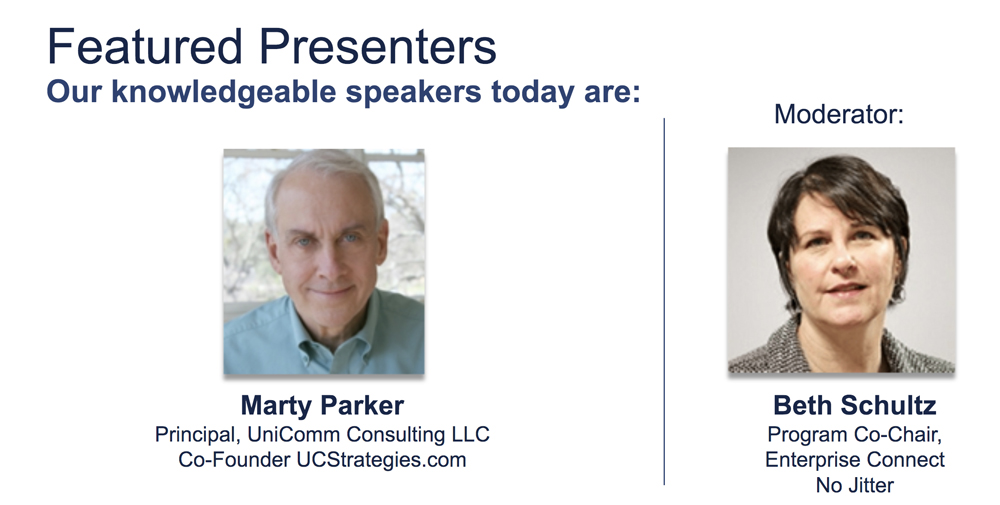If you are wondering what the business world will look like in 2021 and beyond, you are certainly not alone. One of the big uncertainties facing IT professionals is the nature of the workplace environment once the COVID-10 pandemic recedes or an effective vaccine is found.
Rather than polishing a crystal ball or making a guess, Marty Parker suggests creating three different scenarios, and develop an IT strategy that can work in any of those conditions. “The goal is to protect your organization from a catastrophic outcome,” said Parker, principal, UniComm Consulting LLC, in an Enterprise Virtual Connect discussion, “Practical Post-Pandemic Strategies for Success,” with Beth Schultz, program co-chair.
“It’s a major challenge to create a strategic plan when assumptions are changing and the risks are higher,” said Parker, who suggested three scenarios to consider:
• Normal – a recovery to a pre-pandemic working environment, perhaps by mid to late 2021.
• Normal, But – a similar recovery, but with more people preferring to work from home and more customers shopping online
• Transformation – dramatic change, whether by choice or market conditions, such as an upsurge in virtual education offerings or a steep drop in airline travel
“Think about the scenarios that apply to your organization,” said Parker “Write them done and find a strategy that can accommodate them all.” It’s a way to mitigate the risks associated with technology deployments and investments.

Create user profiles
Parker had another suggestion for addressing the uncertainties facing enterprises in the next year: create user profiles of the roles within your organization.
In his talk, Parker outlined eight user profiles, including sales, production, and administrative workers. “Each profile has a different communications footprint, so it’s not a matter of one size fits all,” he said. For instance, only a small percentage qualify as collaborative workers, so IT professionals need to be sure other users also have the right communication tools.
Parker added that some user profiles are more suited to cloud-based solutions than others. If sales people are on the move, for instance, a CRM platform should be in the cloud, rather than on premises. On the other hand, a hospital or healthcare system needs a solution that provides immediate responses for caregivers facing medical emergency situations.
Along with looking at users, Parker suggested mapping out operational workflows and overall supply chains. Some of these processes can be re-engineered temporarily or permanently, using cloud-based platforms. “Many managers and executives are gaining a new appreciation of UC&C tools during the pandemic,” he added.
Look at the culture
IT planning doesn’t occur in a vacuum. Instead , your planning is shaped by the size, scope, goals and culture of the enterprise, said Parker. “Your organization may want to protect its assets during this uncertain time by playing defense, or your leadership might be looking for opportunities to grow market share, sales or revenue.”
One of the key cultural issues that will drive strategic planning is willingness to innovate, according to Parker. Some companies want to be in the forefront of digital transformation, and are looking for ways to capitalize on the shift to work from anywhere solutions. “But if your organization wants to maintain the status quo, you should certainly that that into account when making your IT plans for 2021,” Parker said. “So, think about culture, as well as long-term goals as you develop communications scenarios for your enterprise.”


i love this superb article